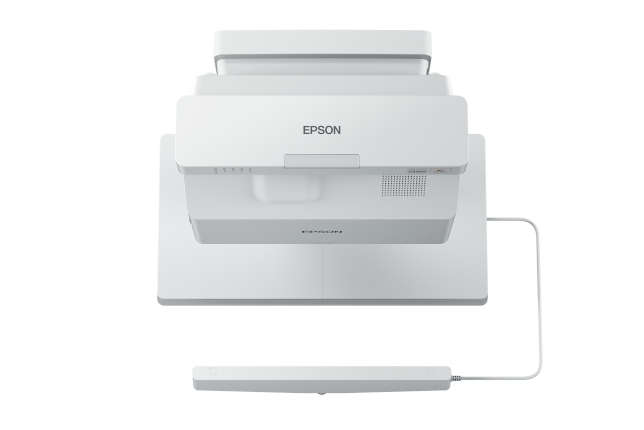Epson Launching 8 New Laser Projectors for Education

Epson
has introduced eight new models in its BrightLink and PowerLite lines
of projectors. All of the new models are laser-based and designed
specifically for education.
The
BrightLink 735Fi and 725Wi are ultra-short-throw interactive
projectors offering dual pen- interactivity(and optional touch
interactivity for up to eight users at once). The BrightLink 735Fi
offers 1080p resolution and a brightness of 3,600 lumens. It also
offers the ability to display either a 100-inch-wide 16:9 image or a
110-inch-wide 16:6 ultrawide image. The BrightLink 725Wi offers a
brightness of 4,000 lumens and a resolution of 1,280 x 800 (WXGA).
Epson
is also launching six new, non-interactive PowerLite models. They
include:
- The
ultra-short-throw PowerLite 725W with a brightness of 4,000 lumens
and a WXGA resolution;
- The
ultra-short-throw PowerLite 720, offering a brightness of 3,800
lumens and an XGA resolution (1,024 x 768);
- The
short-throw PowerLite L200SW, offering a brightness of 3,800 lumens
and a WXGA resolution;
- The
short-throw PowerLite L200SX, offering a brightness of 3,600 lumens
and an XGA resolution;
- The
long-throw PowerLite L200W, offering a brightness of 4,200 lumens and
a WXGA resolution; and
- The
long-throw PowerLite L200X, offering a brightness of 4,200 lumens and
an XGA resolution.
Other
features common to the new BrightLink and PowerLite models include:
- 20,000-hour
laser light source;
- Built-in
5 GHz WiFi;
- Support
for Miracast and Epson iProjection; and
- Instant
on/off.
All
of the BrightLink and PowerLite
700-series models are expected
to ship in September. The PowerLite
L200-series models will ship in November. For more information, visit epson.com/projectors-education.